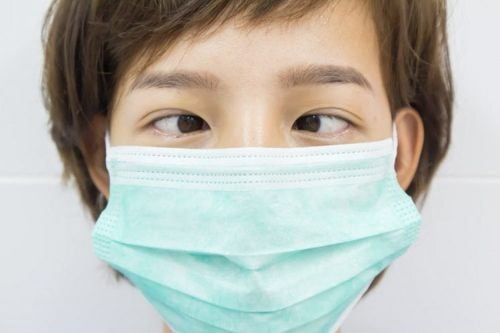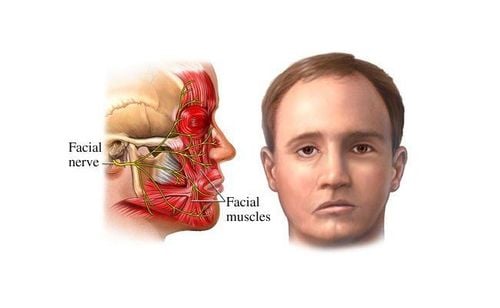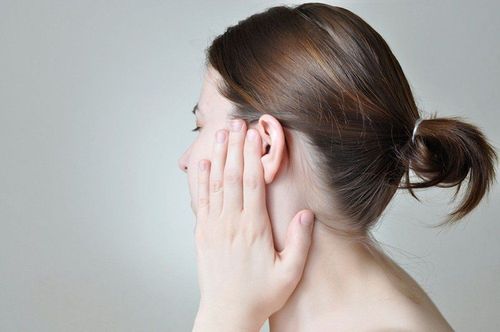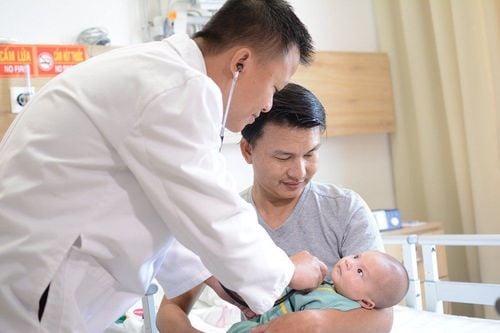This is an automatically translated article.
The article was professionally consulted by Specialist Doctor I Ho Quoc Tuan - Anesthesiologist - General Surgery Department - Vinmec Nha Trang International General Hospital.Ear cartilage inflammation surgery, ear malformation is a difficult plastic surgery, long implementation time. Laryngeal mask anesthesia is an anesthetic method that can be used if endotracheal anesthesia is difficult.
1. Surgery for ear cartilage inflammation, ear malformations
The rim of the ear is the protruding part of the ear on either side of the head, located just behind the temporomandibular joint and the parotid gland, in front of the mastoid and temporal region. The pinna has an important function, helping to receive and absorb sound for transmission into the ear canal. When the auricle is deformed due to otitis externa, ear malformation (child born with hypoplasia or no auricle), trauma, ... not only causes hearing loss but also seriously affects to the aesthetic factor.Due to the complex structure of the auricle with many protrusions and protrusions, the auricular cartilage does not have the same structure as other cartilages on the body, so ear reconstruction surgery due to auricular cartilage inflammation, auricular deformity is one of the The type of plastic surgery is difficult and takes a long time to perform. The most common material used to create an auricle frame is autologous cartilage, which is obtained from the patient's own 6th to 9th costal cartilage. In which, the 6th and 7th costal cartilage blocks are used to shape the contralateral region and the ear curl region, and the 8th costal cartilage is used to create the rotator cuff and the earlobe. Autologous cartilage has the advantage of being relatively stable, easy to mold, and less likely to be lost or deformed after placement. The skin on the back of the ear is considered the most ideal material to cover the front of the earlobe.
Laryngeal mask anesthesia is a general anesthetic technique with a laryngeal mask placed, helping to control breathing during surgery. Laryngeal mask anesthesia can be used as an anesthetic method in surgery for otitis externa, ear malformations if intubation is difficult, especially when ventilation is difficult or impossible. Laryngeal mask anesthesia is not performed in case of full stomach, maxillofacial damage complicated by trauma, infection or when medical facilities do not have enough anesthesia and resuscitation facilities.

2. Preparation of anesthesia for laryngeal mask surgery for ear cartilage inflammation, ear malformations
Anesthesiology team includes doctors and nurses specializing in anesthesiology. Necessary facilities include:
Anesthesia system with breathing, hand-held oxygen source, vital function monitor (ECG, arterial blood pressure, SpO2, EtCO2, breathing rate, temperature), defibrillator , vaccum,...; Laryngeal masks of various sizes, straws, masks, squeeze balls, oropharyngeal canuls; Lidocaine 10% spray, Salbutamol spray; Means to prevent difficult intubation: Cook tube, laryngeal mask, flexible bronchoscope, tracheostomy kit, mouth opening pliers,... The patient will be examined by an anesthetic doctor before surgery to detect and prevent risks; Explain the purpose of anesthesia, steps taken to cooperate with the patient. The doctor also evaluates that it is difficult to put a laryngeal mask in the patient to perform when necessary. In case of necessity, the doctor will appoint the patient to use sedative from the night before surgery.
3. Steps to perform laryngotracheal mask anesthesia surgery for ear cartilage inflammation, ear malformations
3.1. Steps to administer laryngeal mask anesthesia After checking the records and examining the patient, the anesthesiology crew will have the patient lie down on the operating table and breathe 100% oxygen with a flow of 3-6 liters/minute before starting the procedure. anesthesia for at least 5 minutes. Install the monitor, set up the line and pre-anesthesia (if necessary).
Perform induction of anesthesia with drugs:
Sleeping pills: you can use anesthetic drugs such as intravenous anesthetics (propofol, etomidate, thiopental, ketamine,...), volatile anesthetics (sevoflurane, Isoflurane, etc.). ..) Painkillers: fentanyl, sufentanil, morphine,... Muscle relaxants (if necessary): rocuronium, succinylcholine, vecuronium,... Steps to place a laryngeal mask:
Place the patient's head in the position intermediate or slightly supine position Holding the laryngeal mask as in a pen position, place your index finger at the junction between the laryngeal mask and the tube. The doctor (or anesthesiologist) with one hand opens the patient's mouth, with the other hand puts the laryngeal mask through the dental arches to the base of the tongue, presses the back of the mask against the hard palate, pushes the mask to slide along the palate. hard to enter the hypopharynx. Stop when encountering resistance. Inject the cuff according to the volume indicated on the laryngeal mask. Then check the tightness of the laryngeal mask. The laryngeal mask was determined to be closed when there was no air leak and ventilation was easy. The doctor checks that the laryngeal mask position is correct by listening to the lungs and EtCO2 results. If the laryngeal mask is in place, fix the mask with adhesive tape. Administer intravenous or volatile anesthetics to maintain anesthesia during surgery. The doctor prescribes muscle relaxants if necessary. The depth of anesthesia will be closely monitored based on parameters such as heart rate, blood pressure, sweating, tearing (PRST); MAC, BIS, Entropy (if any). The patient's breathing is controlled by machine or hand squeeze.

3.2. Criteria for removing the laryngeal mask after surgery for otitis externa, ear malformations After surgery, the laryngeal mask is removed when the patient meets the following conditions:
The patient is awake, can follow orders, and breathe spontaneously. , respiratory rate within normal limits. Raise the head for more than 5 seconds, TOF >0.9 (if muscle relaxants are used), pulse, blood pressure are stable, body temperature is >35 degrees Celsius. No complications of anesthesia and surgery.
4. Complications and how to handle anesthesia with laryngeal mask surgery for ear cartilage inflammation, ear malformations
4.1. Gastric reflux into the airway When detecting that the patient has digestive juices in the oral cavity and airway, the team quickly put the patient's head down, tilted his head to the side and immediately drained the fluid. Rapid endotracheal intubation and aspiration clear of airway fluid. Closely monitor the patient after surgery to prevent lung infection.
4.2. Hemodynamic complications Hemodynamic disorders can be encountered during anesthesia mask laryngotracheal surgery otitis externa, ear malformations are hypertension, hypotension, arrhythmia. The doctor will treat each case on a case-by-case basis.
4.3. Complications due to laryngeal mask placement Failure to place a laryngeal mask: many possible causes lead to difficulty in placing a laryngeal mask. Treat by changing the mask with the appropriate size, changing the person wearing the mask or switching to endotracheal anesthesia. Tracheobronchospasm: When ventilation is difficult or impossible, the doctor listens to the lungs with crackles or muted lungs, conducts adequate oxygen supply, adds hypnotics and muscle relaxants, ensures ventilation and medications bronchiectasis, corticosteroids. Injuries when wearing a laryngeal mask such as bleeding, broken teeth, falling foreign objects into the airways, damage to the vocal cords, etc. The doctor will deal with specific injuries. 4.4. Respiratory complications Hypoxia and melancholia can occur if the laryngeal mask is folded, slipped or opened, the respiratory system is exhausted, the oxygen source is exhausted, and the soda is not effective. Anesthesia crew will quickly ventilate, provide 100% oxygen and treat the cause.
4.5. Complications after removing the laryngeal mask After removing the larynx mask, the patient may experience complications such as respiratory failure, sore throat, hoarseness, laryngotracheal spasm, upper respiratory tract infection, laryngospasm. trachea, ... The doctor will handle each specific case.

Anesthesia is a routine technique performed at Vinmec International General Hospital. Accordingly, the laryngeal mask anesthesia process at Vinmec is carried out methodically and according to standard procedures by a team of highly skilled doctors and modern machinery. As a result, complications after anesthesia and surgery are always minimized to the maximum extent.
Doctor Quoc Tuan has many years of experience in the field of Anesthesiology - resuscitation at Hoan My Danang Hospital and Phu Yen Provincial General Hospital before being an Anesthesiologist and resuscitator at the Operating Room - Department of Medicine. General surgery of Vinmec Nha Trang International General Hospital as it is today.
Please dial HOTLINE for more information or register for an appointment HERE. Download MyVinmec app to make appointments faster and to manage your bookings easily.














